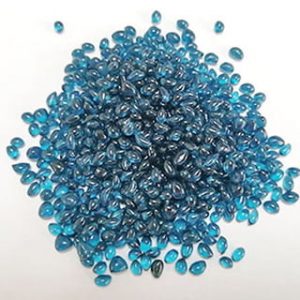Difference and Characteristics of TPU, Rubber and Silicone

Definition
TPU Definition:
TPU is a type of thermoplastic elastomer (TPE), which stands for thermoplastic polyurethane elastomer. It is environmentally friendly, non-toxic, and recyclable. TPU has excellent wear resistance, elasticity, and oil resistance. Its hardness ranges from 70A to 98A, and its original color is transparent.
Rubber Definition:
Rubber can be divided into natural rubber and synthetic rubber according to the raw materials. Natural rubber is extracted from rubber trees, while synthetic rubber is artificially synthesized. Rubber has different types and degrees of wear resistance. Rubber is a completely amorphous polymer, which is elastic at room temperature and can produce large deformation under small external force. After removing the external force, it can recover its original shape.
Silicone Definition:
Silicone is a highly active adsorbent material that is environmentally friendly, non-toxic, and odorless. It has high adsorption performance, is insoluble in water, has good thermal stability and chemical stability, and has high mechanical strength.
Differences and Characteristics:
The feel of silicone is relatively soft, and its elasticity is not as good as TPU. It feels sticky and is easy to attract dust, making it difficult to clean. Its breathability is not as strong as TPU, and when used to make phone cases and other electronic product protective cases, it can cause poor heat dissipation for the phone. Silicone also has a disadvantage in that its tear resistance is poor and its tensile strength is low. The only advantage is that it is cheaper than TPU. TPU material phone cases and protective covers overcome the shortcomings of silicone phone cases, with good wear resistance, scratch resistance, impact resistance, shock absorption, and elasticity. TPU phone cases have a dry and comfortable feel, do not wear out the phone, do not attract dust, and are easy to clean, making them popular among consumers and manufacturers. In comparison with rubber, TPU has obvious advantages in wear resistance, mechanical strength, elasticity, and low-temperature toughness, although some wear-resistant rubber has better wear resistance. TPU has good low-temperature resistance and can still have excellent elasticity and toughness at -50℃, while rubber cannot and becomes brittle and easy to break. Currently, many products on the market are made of rubber mainly because it is cheap and low-cost. In fact, TPU materials can replace rubber in many performance. In the future, TPU will become one of the more popular raw materials for production.
How to distinguish?
So, in the process of production and use, how do we distinguish between TPU, rubber, and silicone? We can distinguish these three materials well through burning, smell, hardness, etc.
TPU (thermoplastic polyurethane):
The burning flame is yellow, with slight sizzling and explosive sound; it has a special odor (the smell of ammonia); TPU is transparent particles, and can also be matched with white or black. The hardness range is 60A~80D.
Rubber (vulcanized type):
The burning flame is yellow, and the burning smell is larger (aromatic hydrocarbons, vulcanizing agents, anti-aging agents and other additives burn to produce); vulcanized rubber products are usually black, but also milk white or yellow products; the material hardness is usually 50~80A. Rubber products have excellent resilience.
Silicone:
The burning flame is bright white, with a light smell, less smoke, and the residue is white powder; silicone has transparent particles, as well as other irregular solid materials; divided into inorganic and organic silicone; hardness range is 10~90A. Silicone has excellent tensile resilience.
